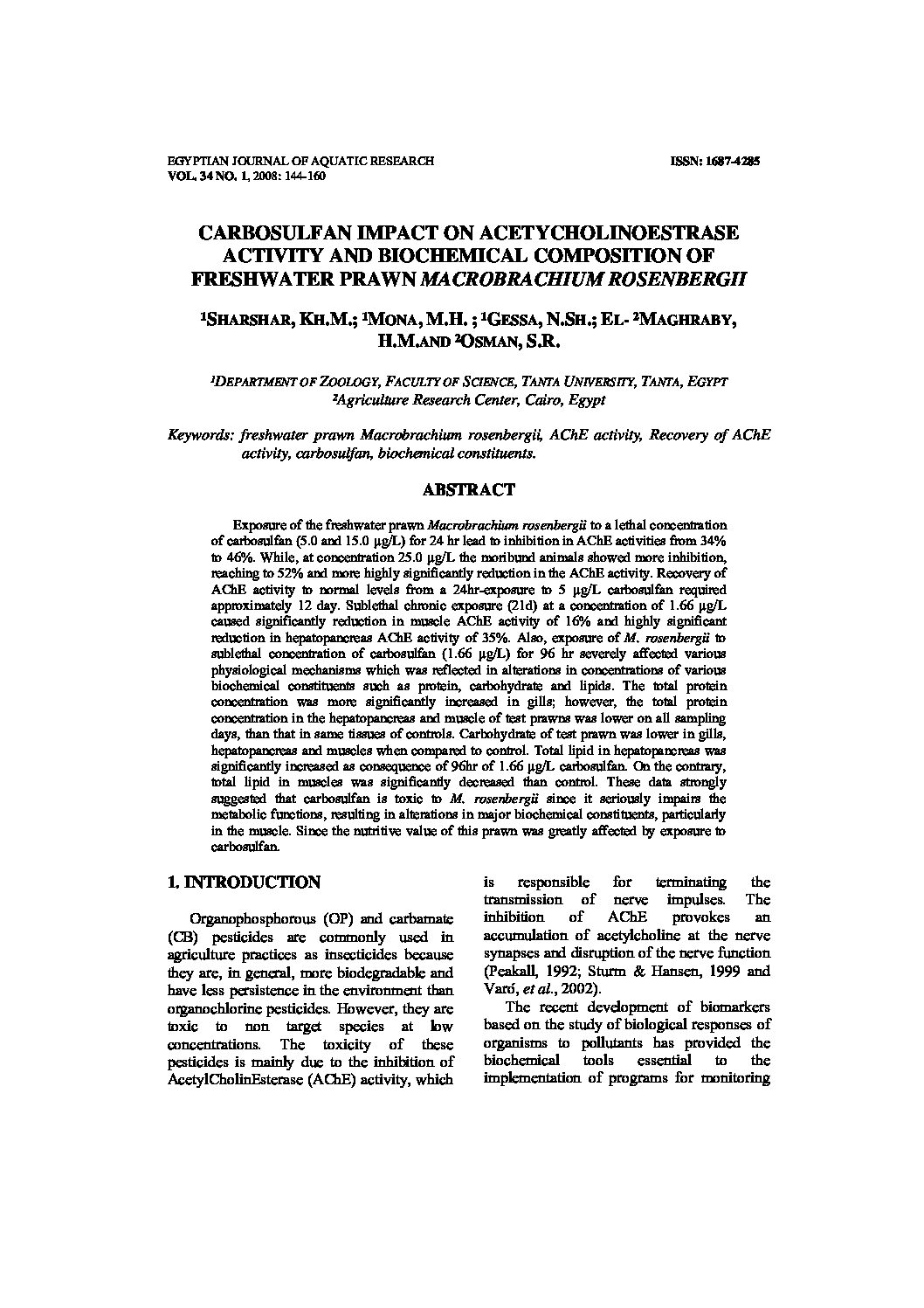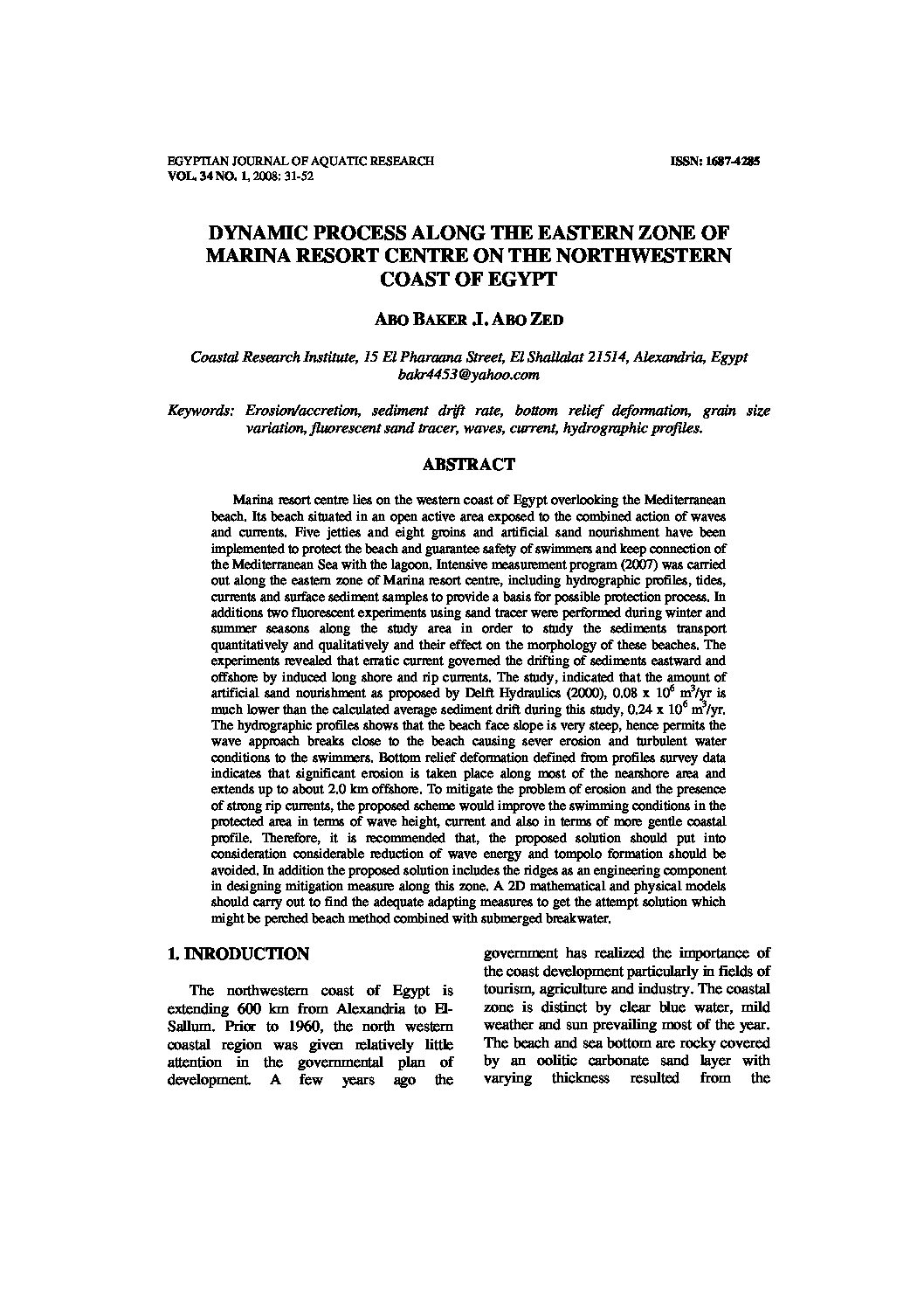Categories
vol-34CARBOSULFAN IMPACT ON ACETYCHOLINOESTRASE
ACTIVITY AND BIOCHEMICAL COMPOSITION OF
FRESHWATER PRAWN MACROBRACHIUM ROSENBERGII
¹SHARSHAR, KH.M.; ¹MONA, M.H. ; ¹GESSA, N.SH.; EL- ²MAGHRABY,
H.M.AND ²OSMAN, S.R.
¹DEPARTMENT OF ZOOLOGY, FACULTY OF SCIENCE, TANTA UNIVERSITY, TANTA, EGYPT
²Agriculture Research Center, Cairo, Egypt
Keywords: freshwater prawn Macrobrachium rosenbergii, AChE activity, Recovery of AChE
activity, carbosulfan, biochemical constituents.
ABSTRACT
Exposure of the freshwater prawn Macrobrachium rosenbergii to a lethal concentration
of carbosulfan (5.0 and 15.0 µg/L) for 24 hr lead to inhibition in AChE activities from 34%
to 46%. While, at concentration 25.0 µg/L the moribund animals showed more inhibition,
reaching to 52% and more highly significantly reduction in the AChE activity. Recovery of
AChE activity to normal levels from a 24hr-exposure to 5 µg/L carbosulfan required
approximately 12 day. Sublethal chronic exposure (21d) at a concentration of 1.66 µg/L
caused significantly reduction in muscle AChE activity of 16% and highly significant
reduction in hepatopancreas AChE activity of 35%. Also, exposure of M. rosenbergii to
sublethal concentration of carbosulfan (1.66 µg/L) for 96 hr severely affected various
physiological mechanisms which was reflected in alterations in concentrations of various
biochemical constituents such as protein, carbohydrate and lipids. The total protein
concentration was more significantly increased in gills; however, the total protein
concentration in the hepatopancreas and muscle of test prawns was lower on all sampling
days, than that in same tissues of controls. Carbohydrate of test prawn was lower in gills,
hepatopancreas and muscles when compared to control. Total lipid in hepatopancreas was
significantly increased as consequence of 96hr of 1.66 µg/L carbosulfan. On the contrary,
total lipid in muscles was significantly decreased than control. These data strongly
suggested that carbosulfan is toxic to M. rosenbergii since it seriously impairs the
metabolic functions, resulting in alterations in major biochemical constituents, particularly
in the muscle. Since the nutritive value of this prawn was greatly affected by exposure to
carbosulfan.







